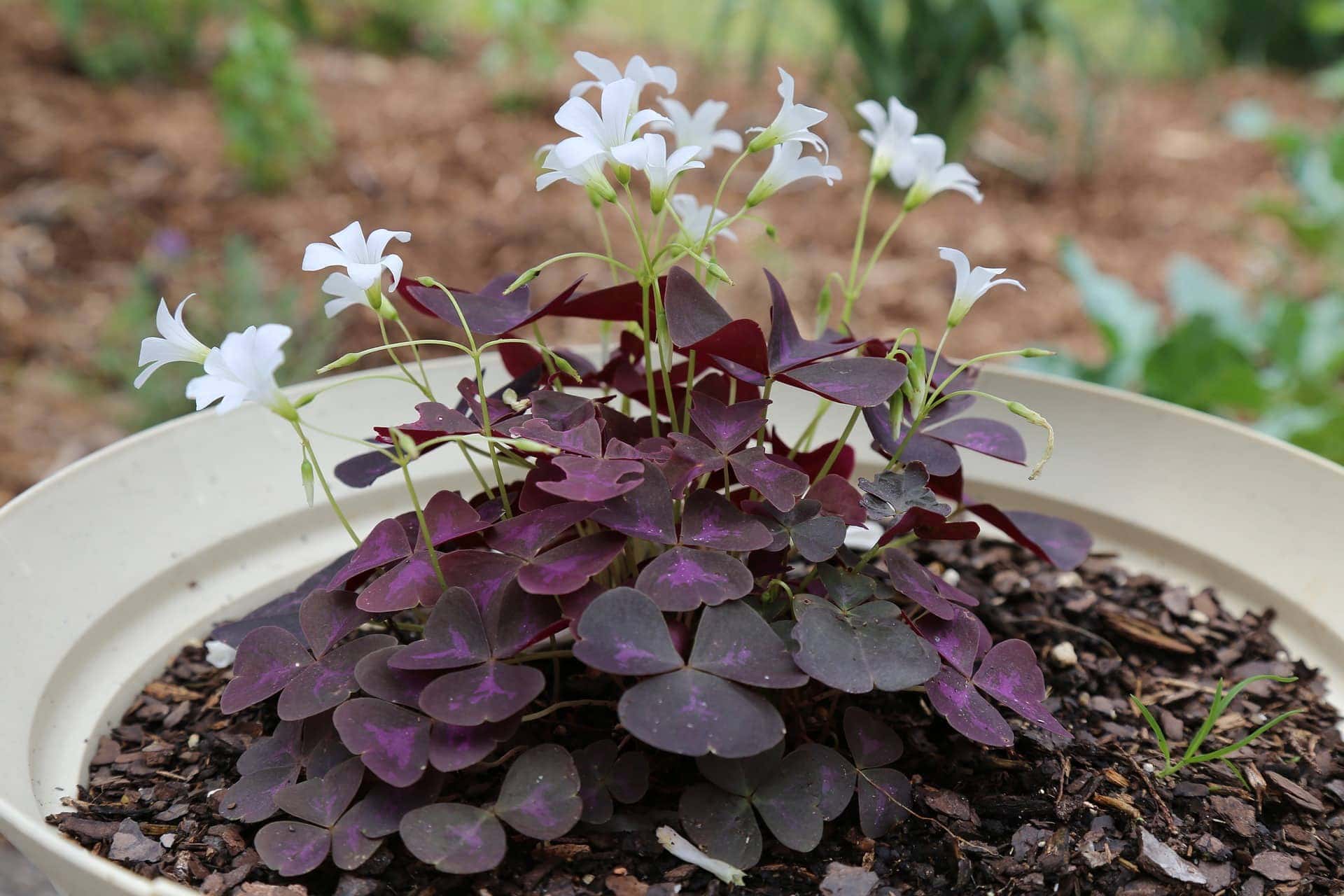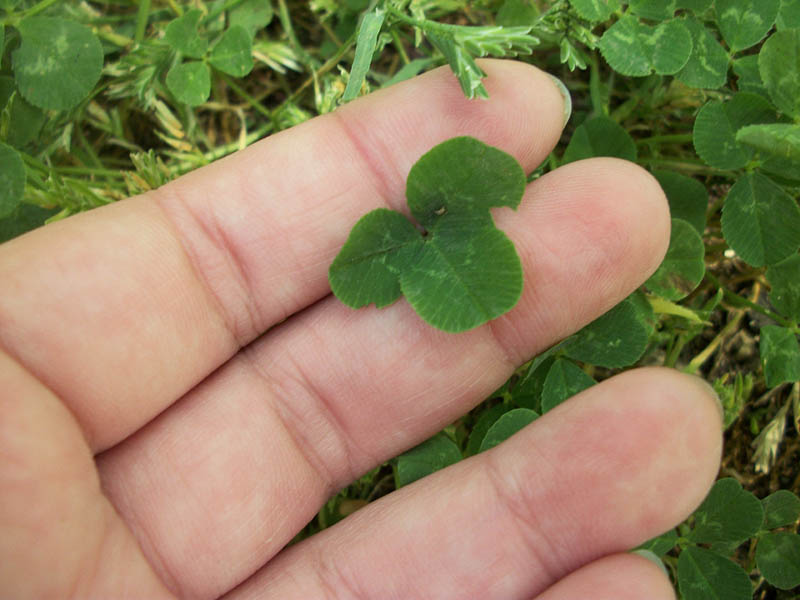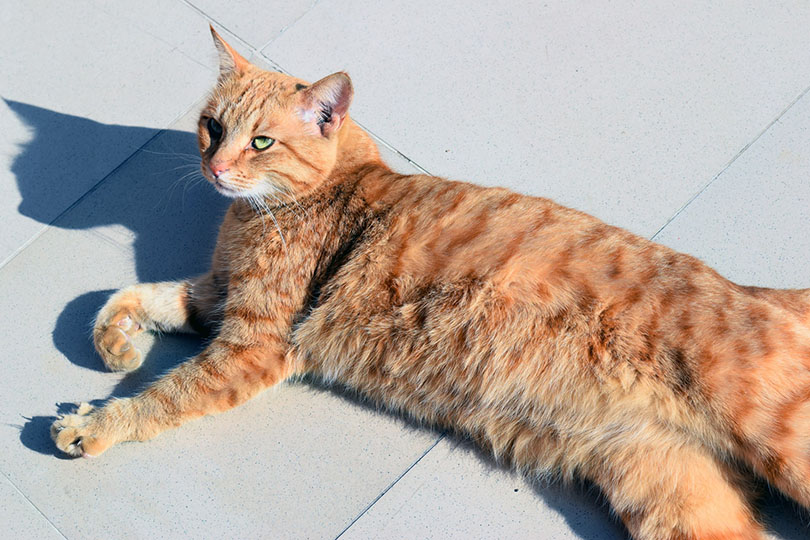Is Oxalis (Shamrock Plant) Poisonous to Cats? Vet-Approved Facts & Safety Tips

Updated on

Click to Skip Ahead
We all know the shamrock plant (Oxalis), also known as sorrel or good luck plant, for being the harbinger of good luck and fortune. These pretty little plants are attractive to the gardener as they easily grow in the ground outside and in containers inside. But did you know that this luck-bringing plant could potentially harm your cat?
You’ll want to take extra care if you choose to grow these because shamrock plants are poisonous to cats. There are many other members of the Oxalis genus such as wood sorrels which are also poisonous.
Keep reading to learn everything you need to know about the toxicity of the shamrock plant and how to identify poisoning in your pet.
Causes of Oxalis Poisoning
Plants have developed many unique defense mechanisms to protect themselves. Thorns, leaf hairs, and even chemicals can prevent herbivory (consumption of plant material by animals). Plants in the Oxalis genus contain oxalic acid and oxalate salts which act as a mode of self-defense against grazing animals and pests.
Oxalates (oxalic acid) are common compounds in plants and occur in either soluble or insoluble forms. Shamrocks contain soluble oxalates in all parts of the plant. These oxalates are made of spike-like compounds that are absorbed in the bowel.
Plants containing soluble oxalic acid are more harmful as they can cause hypocalcemia (a drop in the body’s calcium level) and kidney damage. The soluble oxalate crystals once absorbed bind with the calcium in your cat’s body and prevent them from being able to use it. They can also cause gastrointestinal irritation as they move through the tract. They can form calcium oxalate crystals in the kidneys, causing kidney damage.
The degree of toxicity will depend on how much was consumed and how long they were consuming it. Serious effects are normally seen only if large amounts of the plant are consumed.

Symptoms and Treatment Options
Recognizing the early symptoms of Oxalis poisoning can be key to your pet’s survival, especially if they have ingested a lot of the plant. The symptoms you’ll see in your cat will depend on how much they have eaten and what their health status is like. Cats who suffer from kidney disease or are already dehydrated are at an increased risk of developing serious, potentially fatal, side effects. Most cats however will suffer only more mild consequences as they don’t typically eat much of the bitter-tasting plant.
The most common sign of Oxalis poisoning is gastrointestinal upset. You might notice your cat drooling or vomiting after eating your shamrock plant. They also might lose their appetite or have diarrhea.
Another sign to look for is weakness and lethargy. Is your cat lazier than usual? Are you having a difficult time rousing them from their naps for mealtimes? Any tremors or even seizures?
Treatment of Oxalis (Shamrock) Poisoning
If hypocalcemia becomes an issue, your cat may start having muscle tremors or a slow heart rate.
If you catch your cat gnawing at your plant or see leaves in their vomit, give your veterinarian a call immediately. You can also call the ASPCA Animal Poison Hotline for advice. While Oxalis poisoning is rarely fatal in healthy cats, it’s still worthwhile to get professional advice.
If you take your cat to the vet before symptoms appear, they may induce vomiting to purge the shamrock from your pet’s system. Your vet might also administer medication that’ll bind with the harmful plant compounds to make them less dangerous as they travel throughout your cat’s system.

How to Avoid Shamrock Poisoning
The easiest and most obvious way to avoid shamrock poisoning is not to plant them in the first place. Of course, this isn’t always possible, as your pet may be getting into the plant in a neighbor’s garden. If that’s the case, you might consider keeping your cat indoors to prevent them from getting into any plant-related trouble outside.
If due to unavoidable circumstances you must keep a shamrock plant in your home, place it on a high shelf or in a hanging planter far out of your cat’s reach. Lucky for your cats, the oxalates present in the plant give it a nasty flavor that acts as a deterrent to pets anyway. Unfortunately, that taste isn’t always enough to keep curious and mischievous cats out of harm’s way.
We always recommend being diligent with draining water that accumulates in any of your plant’s catch basins after watering them as well. Empty them regularly so that cats don’t try to drink from them.
Final Thoughts
Shamrocks are a pretty plant that can beautify your yard and indoor space. Unfortunately, the damage they can do to your cat if they eat it can be severe if eaten in large quantities. While shamrock poisoning is rarely fatal, pet owners should do their due diligence in introducing plants into their households.
If you know your cat loves gnawing on plants, choose cat-friendly varieties like bird’s nest fern, monkey tree, cat grass, or spider plants.
Related Reads:
- Is Coleus Toxic to Cats? Keeping Your Cat Safe
- Is Gladiolus Poisonous To Cats? Keeping Your Cat Safe
Featured Image Credit: Jumpstory











